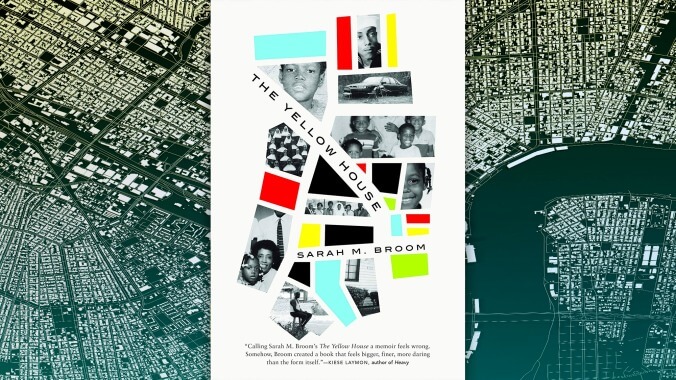Broom attempts to answer these difficult, lifelong questions and many others. She is the baby of the family, the youngest of 12 raised in the titular shotgun house located far beyond the well-trod tourist streets of New Orleans. On every page, Broom makes visceral her longing for the resurrection of life on the wilderness that the streets surrounding her childhood home became after Hurricane Katrina. The house, of course, is a metaphor—as with other places the author has lived—for one’s roots, one’s belonging to a place. This is a New Orleans that will feel similar, or at least adjacent, to the one that lingers in popular culture. But this book is more of a mirror of everyday life beyond the French Quarter, the highs of Mardi Gras celebrations and the lows of drunken visitors, eyes shut to the worst effects of Hurricane Katrina as well as the neglect that preceded the storm, to say nothing of that which followed.
“‘Water has a perfect memory and is forever trying to get back to where it was,’” Broom quotes the late Toni Morrison to describe the havoc wreaked on the Yellow House by Katrina. Readers can also read the water as a metaphor for Broom, for the self, as she reclaims memory by chronicling the stories of love, connection, and devastation created by the house.
The story of the house does not belong solely to Broom. This memoir is also the story of her brother Carl and largely her mother, Ivory Mae—so named because Broom’s grandmother was fascinated with the elephants she visited during lunch breaks spent at the Audubon Zoo. In The Yellow House, belonging is a collective endeavor, and cartography, like almost everything else, is political. The mental maps we have of New Orleans as non-natives—geographical, cultural, and emotional—are incomplete because they ignore lives defined by so much more than disaster.
With a heartrending examination of geography and how place shapes us, Broom recovers intersections of race and class by blending her family history with the city’s evolutions and regressions. She does this while charting a journey that begins and ends in New Orleans but also includes Burundi and her new home, Harlem. The writing is her way of sorting out her family’s investment in this place—no longer an edifice, now just an empty lot, still maintained and looked after by Carl and sometimes the author herself. Broom’s family’s connection to the land is the tie that binds, a story that will never end, a memory that can’t be washed away. Broom excavates this in The Yellow House, infusing her prose with poetry and a hint of mysticism grounded in a history deeper and grander than any force of nature.


 Keep scrolling for more great stories from A.V. Club.
Keep scrolling for more great stories from A.V. Club.